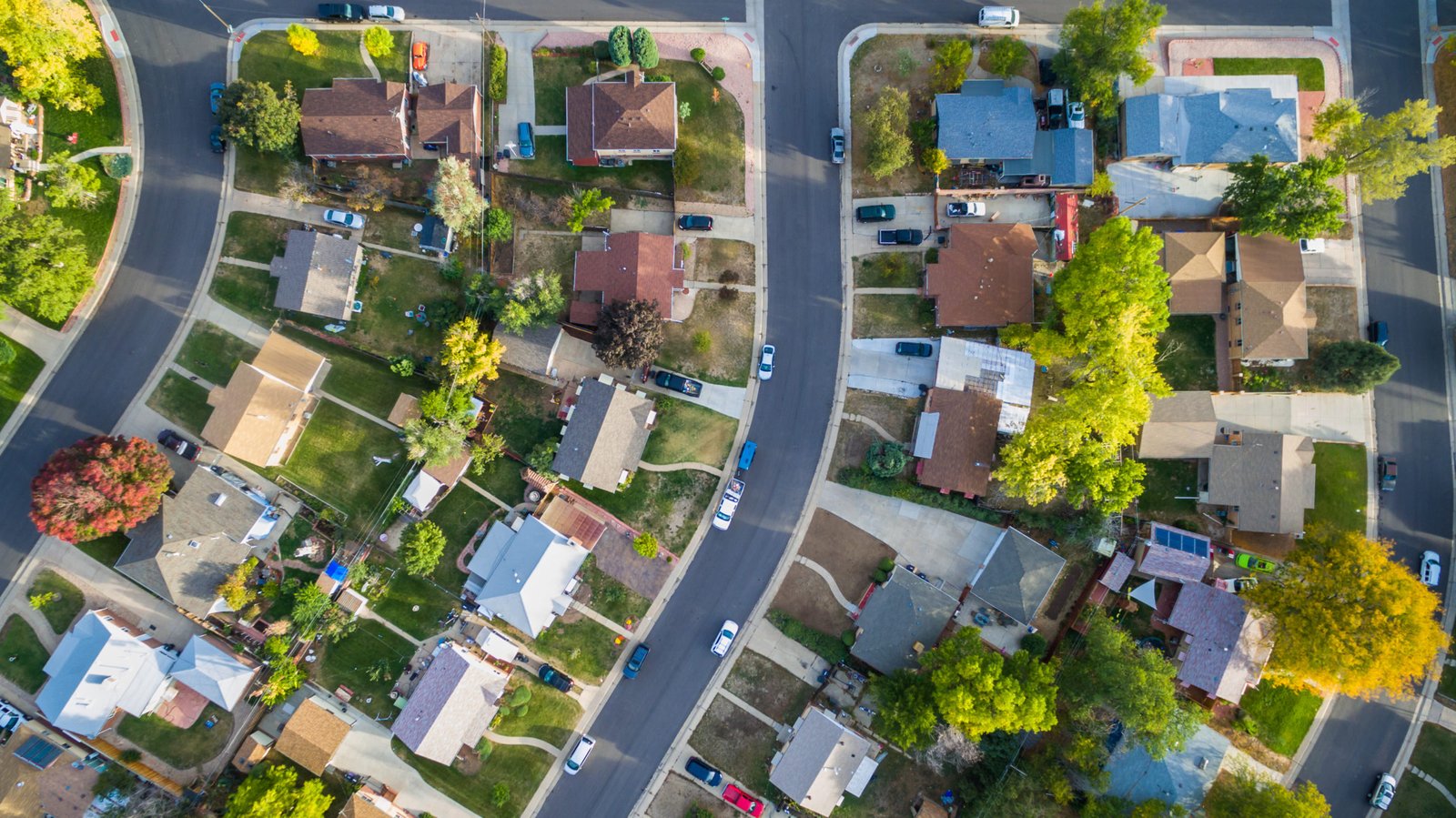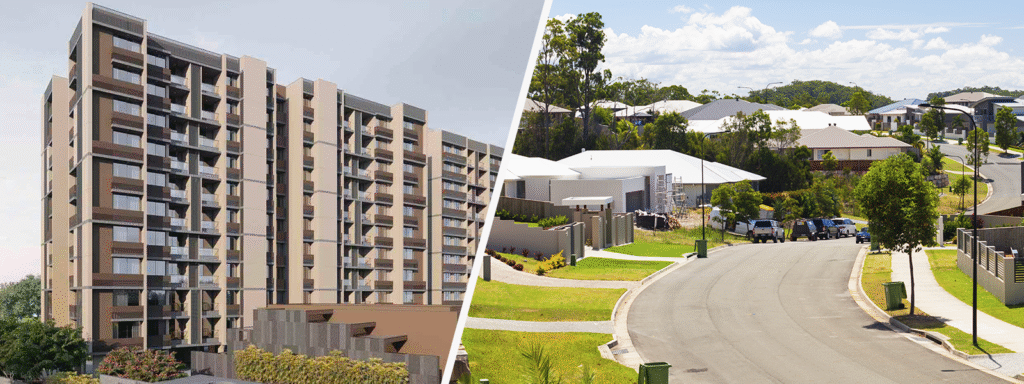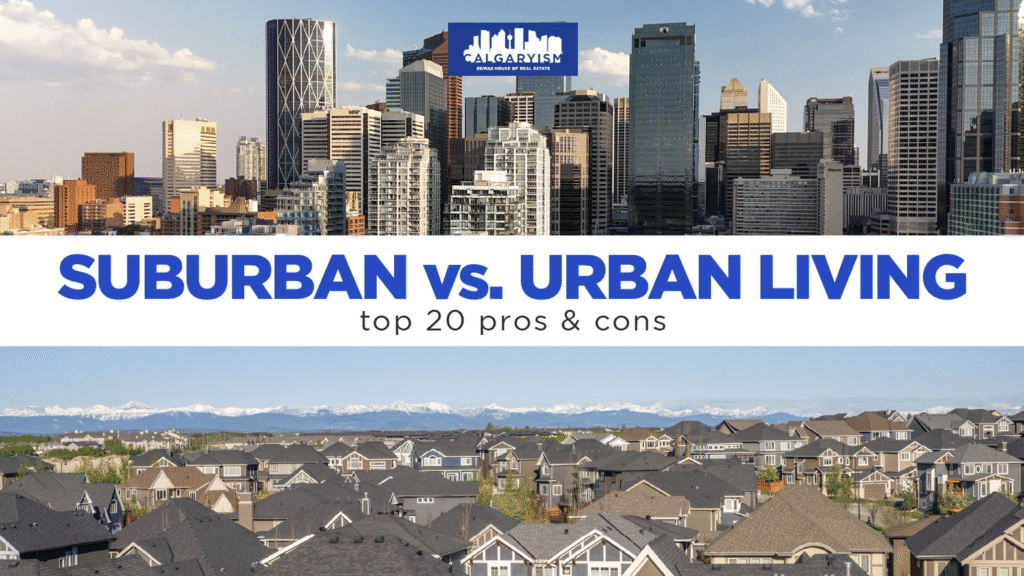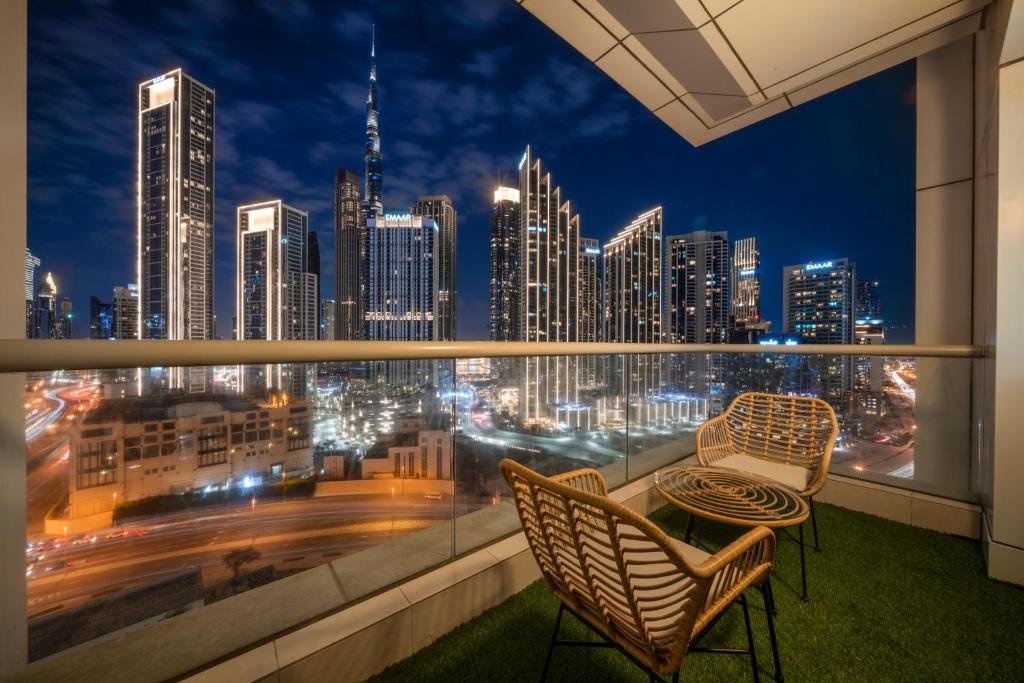Now Reading: Urban vs Suburban Real Estate in the UAE: Choosing the Right Lifestyle in 2025
-
01
Urban vs Suburban Real Estate in the UAE: Choosing the Right Lifestyle in 2025
Urban vs Suburban Real Estate in the UAE: Choosing the Right Lifestyle in 2025

Table of Contents
The UAE real estate market in 2025 is more diverse than ever. As developers expand city centers and masterplan entire suburbs, buyers are faced with a defining question: urban or suburban?
Both offer powerful benefits — from the pulse of city life to the peace of the outskirts — and both are drawing strong interest from different types of residents. Whether you’re a first-time buyer, an investor, or someone planning a lifestyle shift, understanding the key differences between urban and suburban real estate in the UAE is essential to making the right move.
The Urban Appeal: Fast-Paced and Fully Connected
Urban living in the UAE — particularly in districts like Downtown Dubai, Dubai Marina, Business Bay, and Abu Dhabi’s Al Reem Island — offers immediate access to the city’s most dynamic offerings. These are areas built for those who love energy, convenience, and proximity to everything.
Urban properties are typically located close to business districts, high-end retail, fine dining, and cultural attractions. They offer walkable access to metro lines, commercial towers, and entertainment venues, making them ideal for professionals, singles, and investors focused on rental yield.

High-rise apartments dominate the urban landscape, featuring:
- 24/7 security and concierge services
- Rooftop pools and gyms
- Co-working lounges and cafes
- Views of the city skyline or the Arabian Gulf
In 2025, many urban buildings are also equipped with smart tech systems, offering remote access control, green energy solutions, and AI-based home management apps.
The Suburban Shift: Space, Serenity, and Family Life
On the other side of the property spectrum, suburban communities are booming — especially in areas like Dubai Hills Estate, Arabian Ranches, Al Ghadeer, and Yas Acres. These neighborhoods prioritize calm, space, and a sense of community over constant city buzz.
Suburban developments are designed for families, long-term living, and a slower pace. Think wide roads, tree-lined boulevards, cycling trails, and backyard barbecues. Villas and townhouses dominate these areas, often featuring:
- Private gardens and parking
- Community pools and parks
- On-site schools and nurseries
- Nearby supermarkets and healthcare centers
For many residents, the suburbs are about quality of life — raising kids in a safe, clean environment without giving up access to the city, thanks to improved road networks and planned metro extensions.
Affordability and Value
One of the biggest differences between urban and suburban real estate is price per square foot. Urban properties tend to be more expensive — not just in price, but also in maintenance and service fees. You pay for the view, the address, and the lifestyle.
Suburban properties often offer much more space for your budget, including multiple bedrooms, private outdoor areas, and dedicated parking. This makes them especially appealing to growing families or buyers looking for long-term investment without the high overhead.
In 2025, suburban properties are also showing stronger capital growth in newer developments, where infrastructure is being built rapidly and demand is rising.
Rental Returns and Investment Strategy
Urban areas traditionally offer higher rental yields, especially for short-term lets. Tourists, business travelers, and remote workers are constantly looking for well-located apartments in the heart of the city. As a result, one-bedroom units in places like Downtown Dubai or Marina often fetch premium rents.
Suburban properties, meanwhile, offer more stability in long-term rental markets. Tenants in suburban villas or townhouses tend to stay longer — often renewing contracts for years — which creates steady passive income with less turnover risk.
For investors, it becomes a question of strategy: do you want high monthly income with higher management, or long-term tenants with lower maintenance?
Lifestyle Considerations
Beyond financials, lifestyle plays a huge role in the urban vs suburban decision.
Choose urban if you:
- Thrive on social energy and nightlife
- Want to walk or take public transport everywhere
- Love being close to shopping, dining, and work
- Prefer amenities like rooftop pools, lounges, and gyms within your building
- Are single, a couple, or a digital nomad needing a central base
Choose suburban if you:
- Prioritize peace, space, and greenery
- Are raising children or planning a family
- Want a pet-friendly home with outdoor space
- Enjoy community living, events, and slower weekends
- Don’t mind driving or living slightly farther from the city center
Sustainability and Smart Living
Interestingly, both urban and suburban developments in the UAE are now racing to be greener and smarter.
Urban towers are integrating solar energy, automated lighting, and greywater recycling. Suburban communities are promoting electric car charging, organic farming zones, and walkable town centers to cut down on car dependence.
In areas like Tilal Al Ghaf or The Sustainable City, residents enjoy suburban calm while living in eco-conscious, tech-savvy environments — showing that sustainability is now a top priority across all real estate segments.

What Developers Are Doing Right
Leading UAE developers are taking note of shifting buyer preferences and responding with smart solutions. Many urban projects now include co-living units for young professionals, while suburban projects are focusing on wellness-based planning, including lagoon parks, walking trails, and outdoor fitness areas.
Mixed-use projects are also on the rise — blurring the line between urban and suburban by creating small, self-sufficient communities within larger city zones.
For example, Dubai Creek Harbour offers high-rise views with nature-based layouts. Aljada in Sharjah brings together city vibes with expansive green public spaces.
Final Thoughts: Finding Your Fit
In 2025, the UAE real estate market doesn’t force a choice between fast or slow, city or suburbs. Instead, it empowers buyers with options that suit their values, goals, and lifestyle.
Whether you’re drawn to the bright lights of the skyline or the calm of a garden retreat, both urban and suburban properties offer smart investment opportunities and enriching ways to live.
The smartest move? Know your needs, match them to your environment, and let your lifestyle lead the way.
Also read – Golf Community Villas in Dubai: Where Luxury Meets Lifestyle in 2025






















